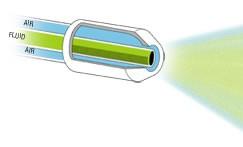Metal working fluids enhance the lifespan of different metals used in the metal working process. In addition, these fluids have a superior maintenance quotient that improves performance. The commonly used products under this category are coolants and lubricants. Whereas various manufacturing units use lubricants to prevent wear and tear, coolants are widely used in the … Read more
Month: February 2014
Metal cutting fluids are simply oil or water based fluids that are used when cutting metals. They are mainly used in the manufacturing industry to produce a wide array of items like wire, coins and other complex products. Why they are used When cutting a metal, these fluids help to cool the cutting surface, reduce … Read more
If your company would like to increase the factory throughput, reduce tool maintenance costs and improve product quality in a safe environment, then you may want to start using bio-based metal cutting fluids. These fluids have superior viscosity and excellent lubricity. To achieve the goal of energy independence and a cleaner surrounding, then you may … Read more



